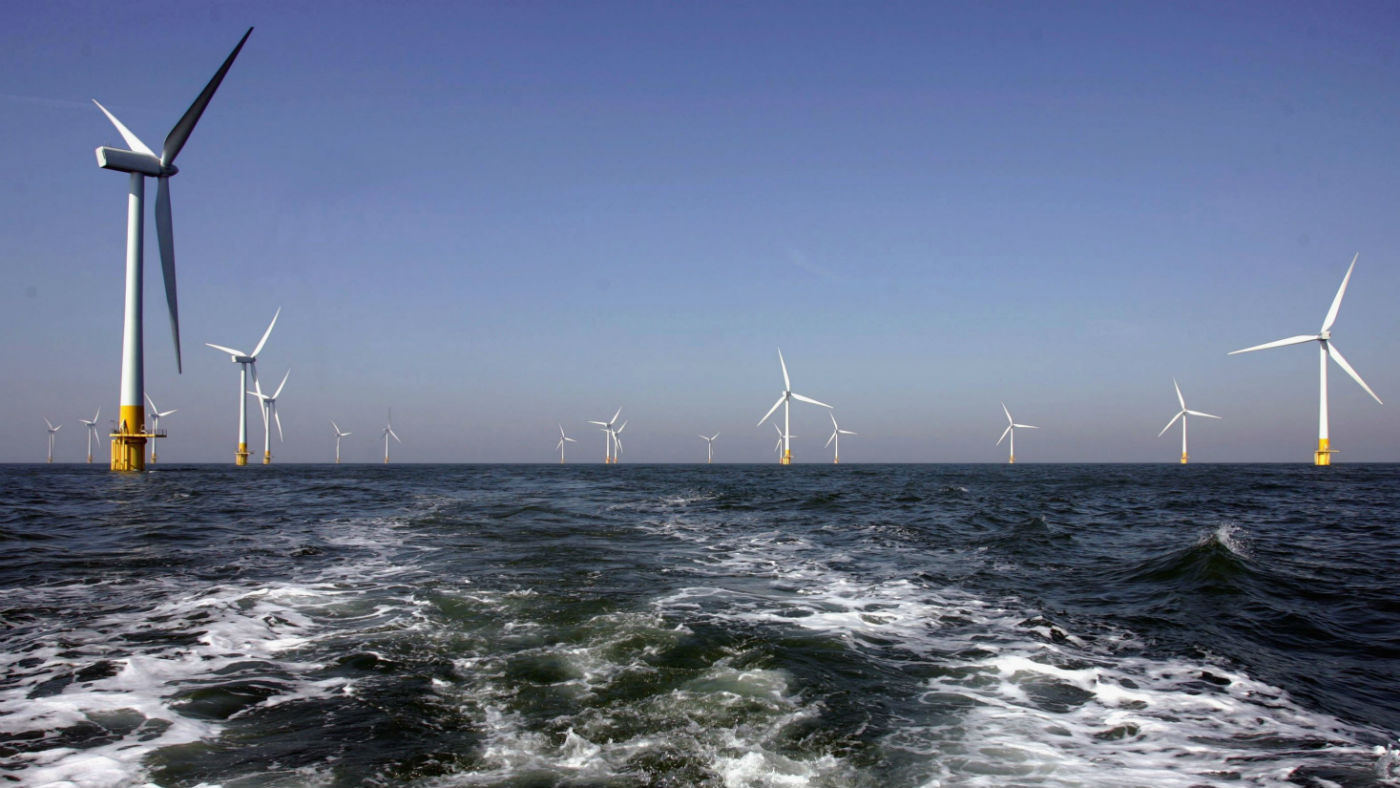UK offshore wind power to double by 2030
Plummeting renewable costs raise questions about government’s continued support for nuclear energy

Britain’s offshore wind capacity is set to double over the next decade, driven by a government strategy forcing turbine operators to bid for financial support in auctions.
Plummeting costs have made wind an increasingly affordable source of clean energy in recent years. By 2030, between a fifth and a third of the UK's electricity is expected to come from offshore wind power.
In a bid to give the industry the long-term stability it needs to continue to expand, Climate and Energy Secretary Claire Perry has confirmed that every two years the Government will hold auctions in which energy firms bid for contracts that guarantee a minimum price for the power they will sell.
The Week
Escape your echo chamber. Get the facts behind the news, plus analysis from multiple perspectives.

Sign up for The Week's Free Newsletters
From our morning news briefing to a weekly Good News Newsletter, get the best of The Week delivered directly to your inbox.
From our morning news briefing to a weekly Good News Newsletter, get the best of The Week delivered directly to your inbox.
The auction process “has forced firms to be transparent about the amount of support they actually need, and has halved the cost of supporting offshore wind”, says the BBC.
The system has been adopted worldwide “and is recognised as a major UK contribution to the development of clean energy” says the broadcaster.
Last year renewable sources supplied more than half of the UK’s energy for the first time, exceeding what was generated by burning coal and gas.
Yet the plummeting costs of wind and solar power, which has dropped by 99% since the technology was commercialised, has thrown the government’s commitment to nuclear power into question.
A free daily email with the biggest news stories of the day – and the best features from TheWeek.com
Theresa May has committed to building the controversial Hinkley Point nuclear power station, despite strong opposition from environmentalists, consumer groups and a National Audit Office report which claimed the project is “risky and expensive… with uncertain strategic and economic benefits”.
By contrast, Scotland has become a world leader in sourcing its electricity from renewables, after a record year in 2017 for creating eco-friendly energy.
The nation got more than two-thirds (68.1%) of its electricity from green schemes last year, The Independent reports, up from 54% the year before.
-
 Ashes to ashes, ducks to ducks: the end of Bazball?
Ashes to ashes, ducks to ducks: the end of Bazball?Talking Point Swashbuckling philosophy of England men’s cricket team ‘that once carried all along with it has become divisive and polarising’
-
 The strangely resilient phenomenon of stowaways on planes
The strangely resilient phenomenon of stowaways on planesIn The Spotlight Lapses in security are still allowing passengers to board flights without tickets or passports
-
 Four Seasons Seoul: a fascinating blend of old and new in South Korea
Four Seasons Seoul: a fascinating blend of old and new in South KoreaThe Week Recommends Located right in the heart of the action, this classy hotel is the perfect base to explore the capital
-
 Pros and cons of geothermal energy
Pros and cons of geothermal energyPros and Cons Renewable source is environmentally friendly but it is location-specific
-
 Are we entering a ‘golden age’ of nuclear power?
Are we entering a ‘golden age’ of nuclear power?The Explainer The government is promising to ‘fire up nuclear power’. Why, and how?
-
 Megabatteries are powering up clean energy
Megabatteries are powering up clean energyUnder the radar They can store and release excess energy
-
 Renewables top coal as Trump seeks reversal
Renewables top coal as Trump seeks reversalSpeed Read For the first time, renewable energy sources generated more power than coal, said a new report
-
 Pakistan's solar panel boom
Pakistan's solar panel boomUnder The Radar A 'perfect storm' has created a solar 'revolution' in the south Asian country
-
 Airlines ramp up the hunt for sustainable aviation fuel
Airlines ramp up the hunt for sustainable aviation fuelUnder The Radar Several large airlines have announced sustainability goals for the coming decades
-
 How would reaching net zero change our lives?
How would reaching net zero change our lives?Today's Big Question Climate target could bring many benefits but global heating would continue
-
 What are Trump's plans for the climate?
What are Trump's plans for the climate?Today's big question Trump's America may be a lot less green